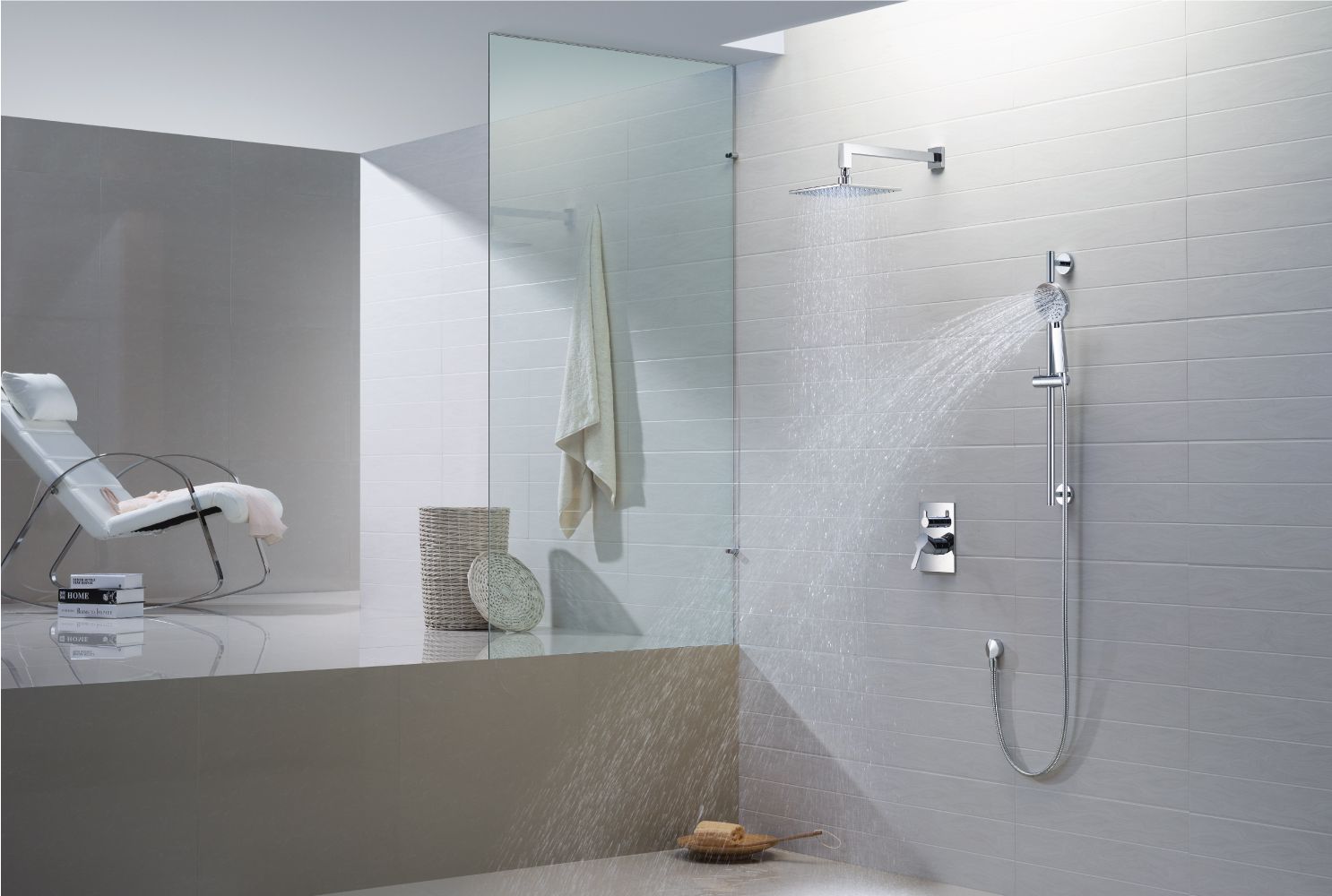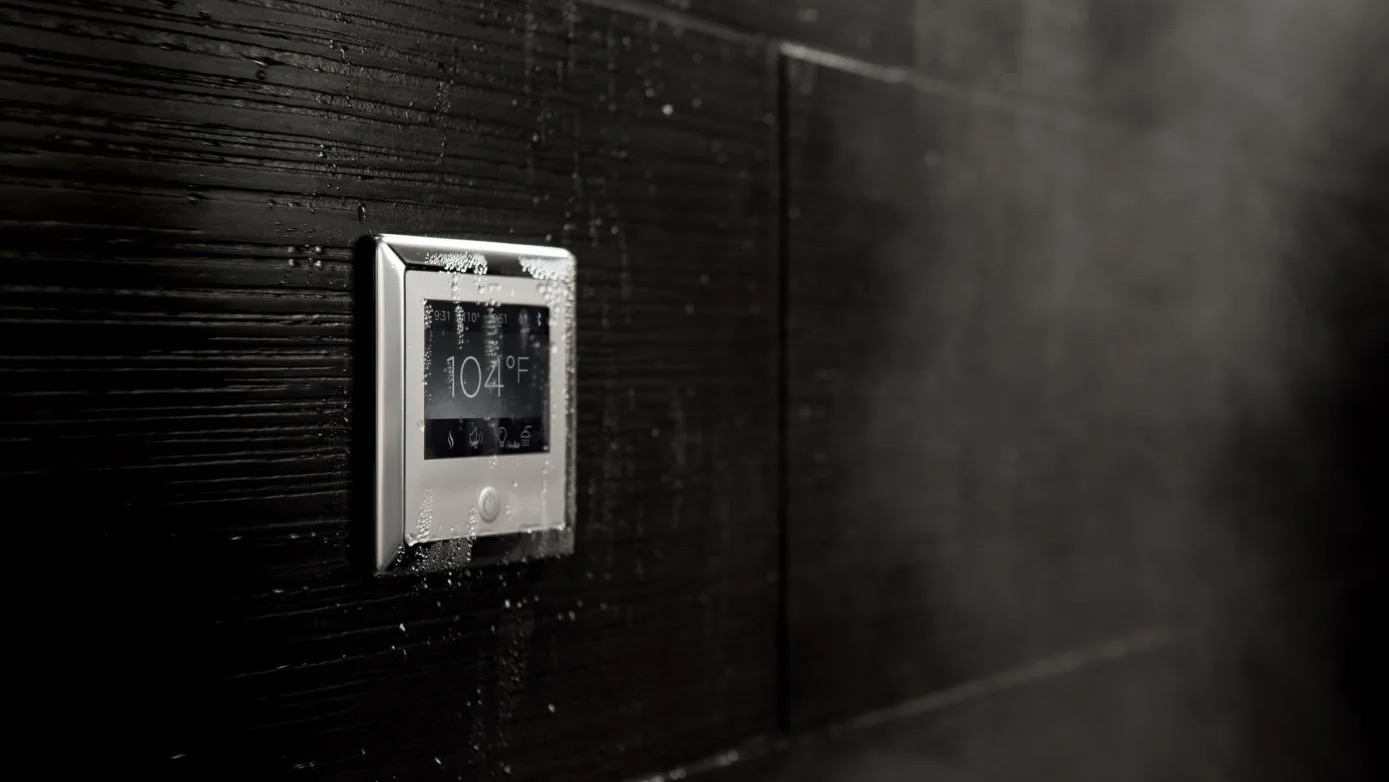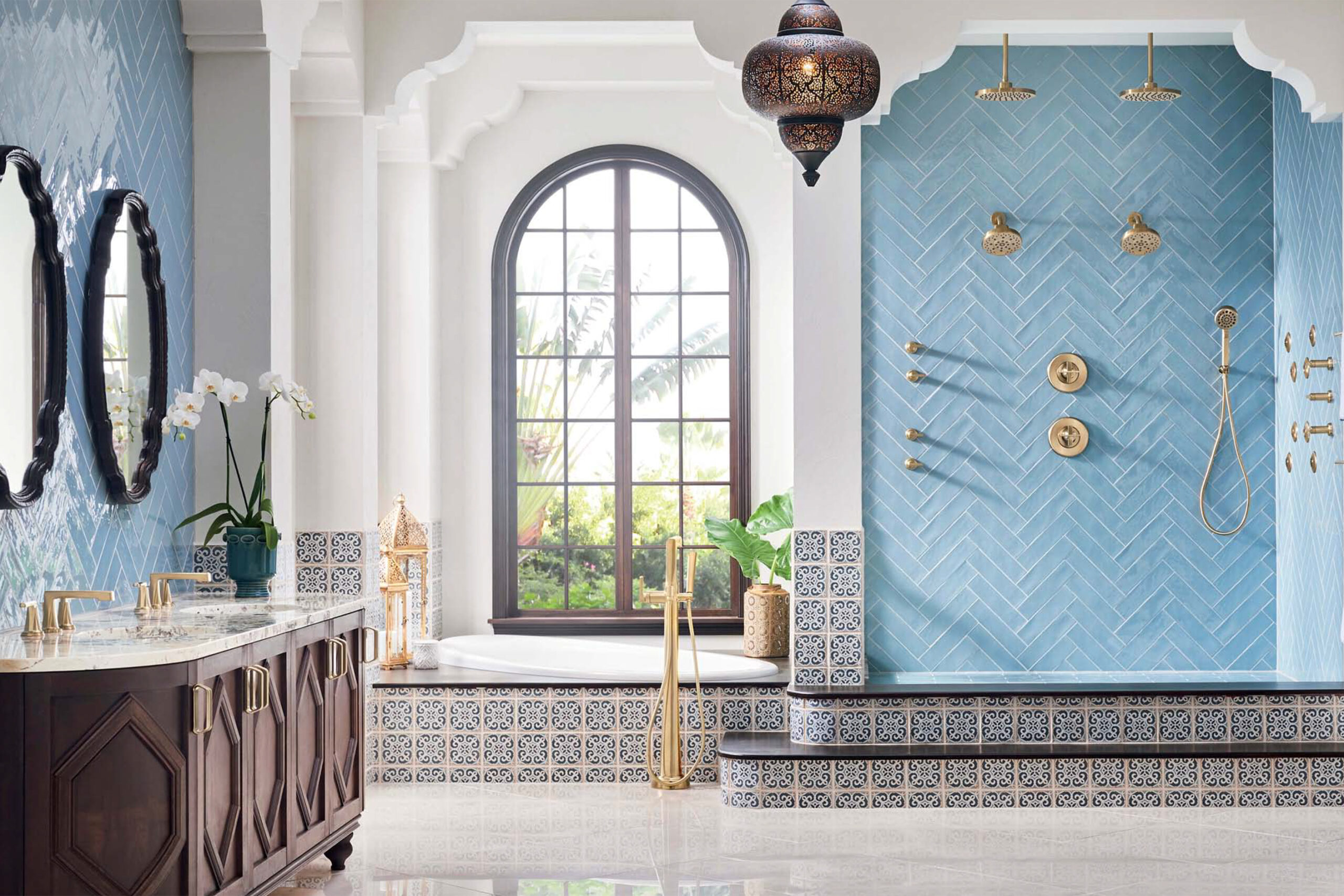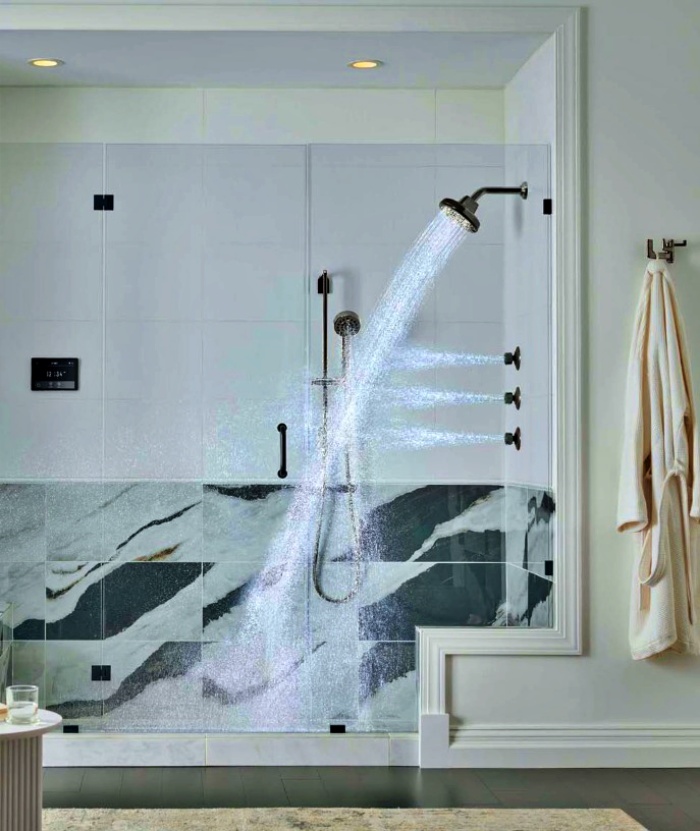For centuries, bathing meant filling a tub with water and scrubbing with a washcloth. The first modern showers emerged in the late 1800s, but they were rudimentary at best, with just a handheld nozzle or overhead fixture. It wasn’t until the 1940s and 50s that showers really took off, as indoor plumbing became standard in American homes.
The post-war housing boom brought showers into the mainstream, with basic standardized stalls and showerheads. By the 1960s, showers were becoming more stylish and decorative. The 1970s and 80s saw the rise of mass-produced fiberglass shower units and the emergence of multi-function showerheads. The 90s brought rainfall showerheads, body sprays, and luxurious materials like stone and glass.
In the 2000s, digital showers with touchscreens, music, and lighting effects became popular. The 2010s saw a focus on eco-friendly showers with low-flow designs. Now in the 2020s, showers continue getting smarter, more immersive, and highly customizable. Key innovations focus on relaxation, rejuvenation, accessibility, and sustainability – elevating showers into a therapeutic escape.

Smart Shower Systems
Showers are getting smarter with built-in technology that enhances the bathing experience. One of the hottest trends is showers with integrated lighting, sound systems, and digital displays. These high-tech features turn an ordinary shower into a personalized spa retreat.
Smart showers allow you to set your preferred lighting scene and audio playlist right from your smartphone or tablet. LED lighting strips built into the shower walls and ceiling create an immersive experience. You can choose different colors, brightness levels, and effects to match your mood. Integrated Bluetooth speakers let you stream your favorite music, news, or podcasts for a truly customized shower.
Some luxury smart showers even have waterproof TVs to watch entertainment. Others have digital displays to check the weather, news headlines, or your calendar. Motion sensors can detect when you enter the shower and automatically turn on the lights, music, and other settings. Voice assistants like Alexa allow for hands-free voice control.
These intelligent showers are transforming a utilitarian daily routine into a spa-like escape and highlight the innovations moving bathrooms into the future. The technology not only adds convenience but also promotes relaxation and rejuvenation. Just imagine starting your day with a shower personally tailored to be calming, energizing, or inspiring.

Touchless Controls:
Touchless shower technology has seen a surge in popularity in recent years. More and more homeowners are opting for faucets, showerheads, and other features that can be controlled without direct physical contact. There are several reasons behind this growing trend.
First, touchless controls are simply more hygienic. By keeping your hands away from handles and knobs, you reduce the spread of germs and bacteria. This has become especially important in the wake of the COVID-19 pandemic, as people aim to minimize contact with high-touch surfaces.
Touchless showers are also more convenient and accessible. You don’t have to worry about readjusting the temperature and flow during your shower. The sensors take care of that automatically. This makes touchless showers ideal for households with children or elderly family members.
Lastly, touchless showers create a more luxurious, spa-like experience at home. With hands-free operation, you can enjoy a relaxing shower without any of the frustrations of toggling settings. The technology makes showering feel seamless and indulgent.
Water-Efficient Solutions:
With water scarcity becoming an increasing concern worldwide, the modern bathroom has become a target for conservation efforts. Showers account for nearly 17% of residential indoor water use, making them one of the leading water guzzlers in homes. As populations grow and droughts become more frequent, reducing shower water consumption has become an important goal.
There are several key reasons why minimizing water waste in the shower is critical:
- Showers are the third largest water use in most homes after toilets and washing machines. The average 8-minute shower uses around 17 gallons of water, adding up to nearly 30,000 gallons per year for daily showers.
- Many regions across the globe are facing long-term droughts and dwindling freshwater supplies. Reducing shower water use helps preserve this precious resource and prevents shortages.
- Water bills are rising as supplies are stretched. Cutting shower water usage through efficient fixtures and systems can lead to significant financial savings for households. A low-flow showerhead can reduce water bills by $100 or more per year.
- Minimizing water waste keeps more water in the natural environment. This helps support healthy rivers, lakes, and wetlands which are vital for wildlife.
- Saving water reduces the energy needed to pump, heat, and treat water supplies. This benefits the environment and lowers energy bills.
With easy solutions available to minimize wasteful water usage, eco-conscious homeowners are embracing water-saving shower technologies to help conserve this precious resource.
Low-Flow Showerheads
Low-flow showerheads are designed to conserve water by restricting the flow rate while still providing adequate water pressure for an enjoyable shower. They work by mixing air with the water stream to maintain pressure while using less water.
Conventional showerheads have a flow rate of 2.5 gallons per minute (GPM) or more. Low-flow showerheads restrict the flow to 2.0 GPM or less. They achieve this by aerating the water stream – mixing air with the water as it passes through the showerhead. This maintains the feeling of pressure and full flow while using less water.
Low-flow showerheads contain an aerator mechanism inside. As water passes through, it is injected with air via small ports. This air injection reduces the water usage while maintaining the pressure and wetting ability of the stream. The aerated water feels similar to a higher flow rate but uses less water.
Types of Low-Flow Showerheads
There are many options when selecting a low-flow showerhead:
- Standard low-flow – 2.0 GPM or less
- High-efficiency – 1.5 GPM or less
- Ultra low-flow – 0.5 GPM or less
- Multi-setting – Adjustable flow rates
Top brands for low-flow showerheads include Moen, Kohler, and Duravit, among others. Look for the EPA’s WaterSense label when choosing a model. Low-flow showerheads are an easy way to conserve water and reduce bills while still enjoying a stimulating shower.
Water-Saving Shower Valves
Water-saving shower valves are an effective way to reduce water usage while maintaining optimal water pressure and temperature. These valves work by controlling and regulating the flow of hot and cold water entering the shower.
There are two main types of water-saving shower valves:
- Thermostatic valves – These valves automatically balance the hot and cold water supply to maintain a constant temperature, even if other water sources in the home are in use. The valve contains a thermometer that senses temperature changes and adjusts accordingly.
- Pressure balancing valves – These valves monitor fluctuations in water pressure and automatically adjust the hot and cold water flow to compensate. If pressure drops on the hot or cold side, more water will flow from the other side to keep the temperature steady.
Water-saving shower valves provide several benefits:
- Prevent temperature fluctuations – By maintaining a steady temperature, thermostatic and pressure balancing valves prevent uncomfortable hot and cold surprises while showering.
- Reduce water waste – The valves allow optimal water pressure while using less water, preventing waste from temperature and pressure changes.
- Energy savings – Less water usage means less energy required to heat the water for showering.
- Lower utility bills – Homeowners can save on their monthly water and energy bills by installing water-saving shower valves.
- Easy installation – The valves can be installed relatively easily by replacing standard shower valves. No major plumbing alterations are required.
Water-saving shower valves are an economical way to reduce home water usage and utility costs while still enjoying a comfortable shower experience. As water conservation becomes increasingly important, efficient shower valves provide an effective solution.

If you are searching the market for an innovative shower, you have come to the right place. Our expert consultants at our showroom at International Bath and Tile can help you find the latest innovative shower products in person. Our knowledgeable staff is available to provide expert guidance and assist you in selecting the perfect shower solutions for your needs and preferences.
